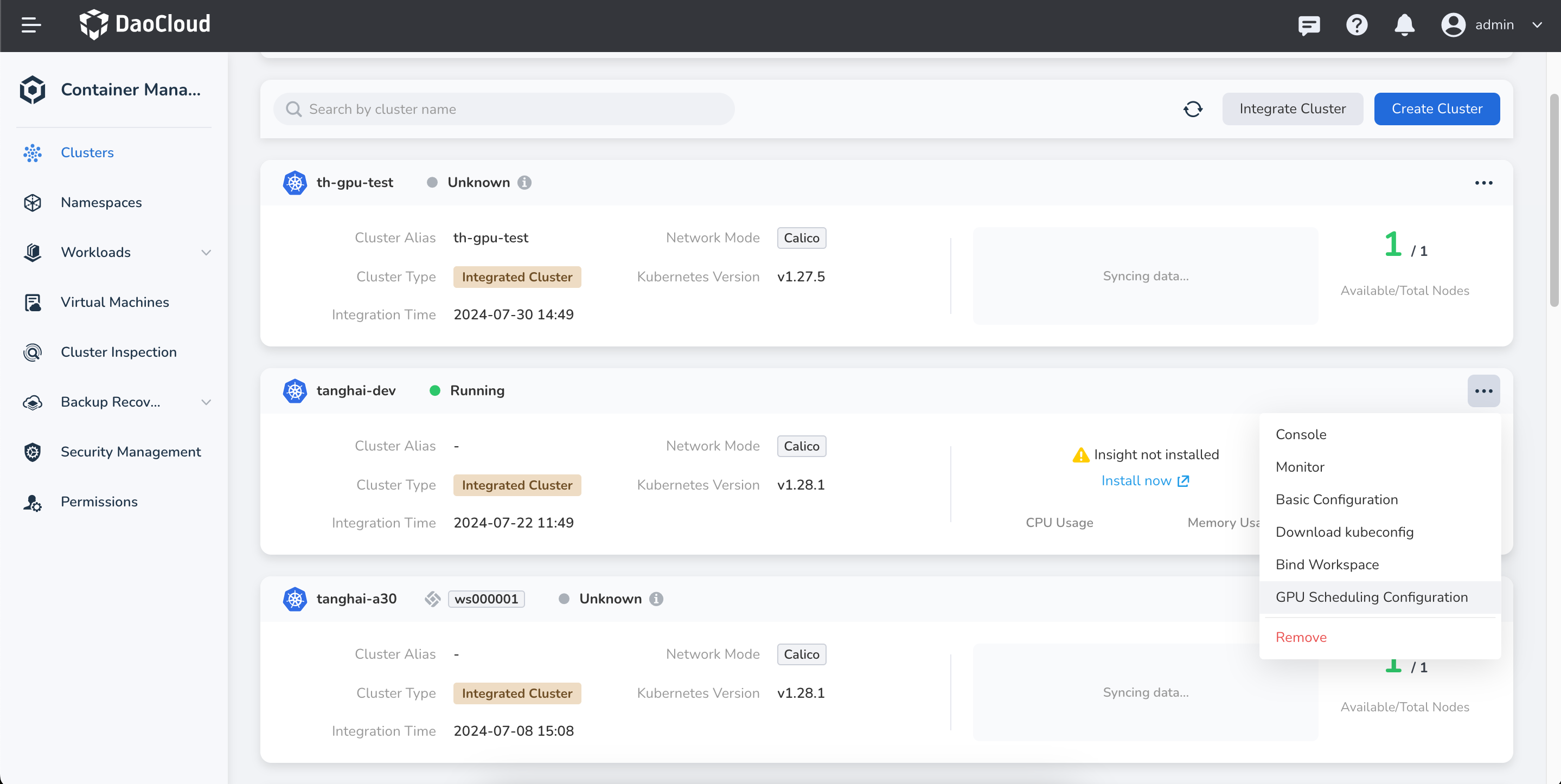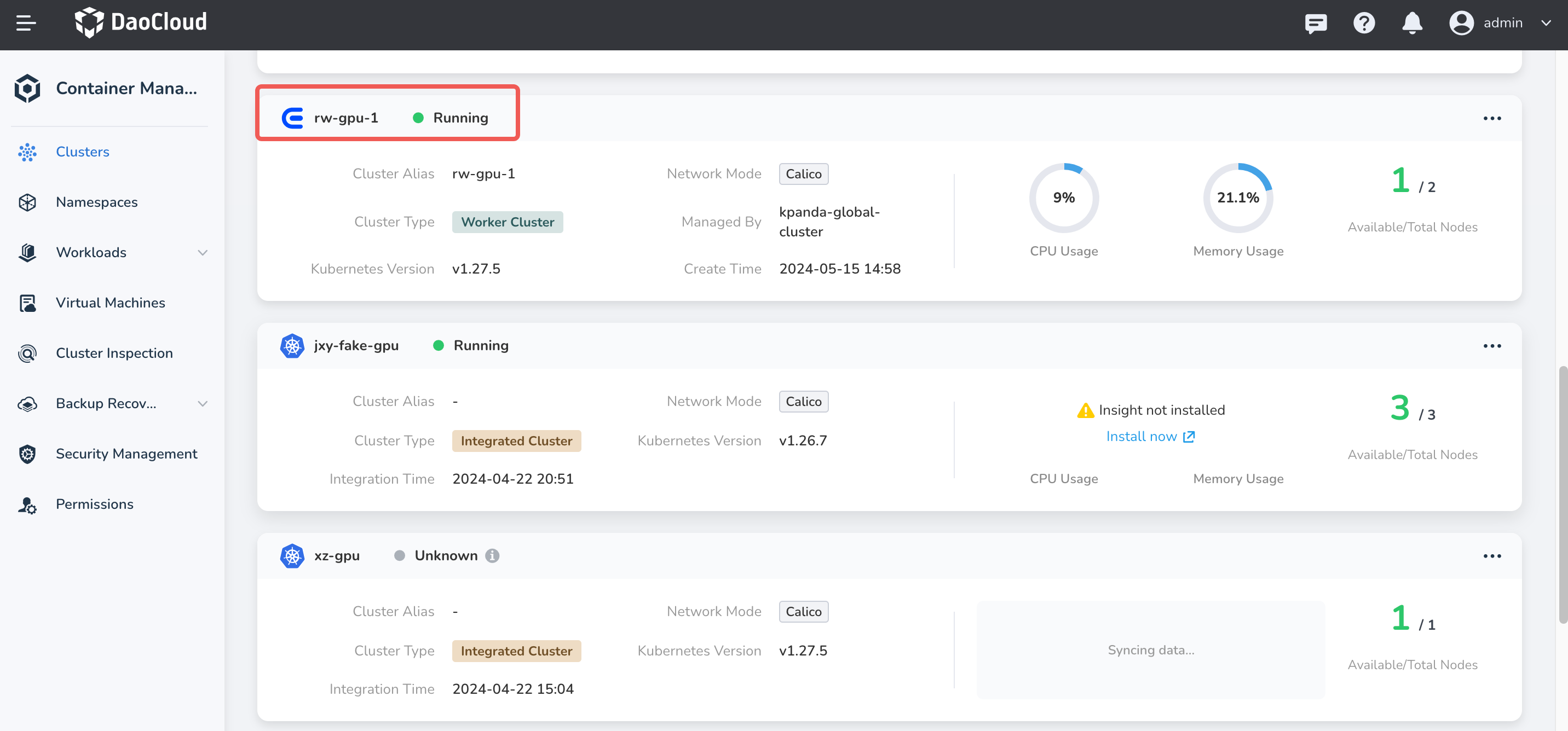GPU Scheduling Configuration (Binpack and Spread)¶
This document describes how to configure GPU scheduling using Binpack and Spread strategies when using NVIDIA vGPU. These configurations help reduce GPU resource fragmentation and prevent single points of failure, enabling advanced vGPU scheduling.
The DCE 5.0 platform provides Binpack and Spread scheduling strategies at both cluster and workload levels to suit various usage scenarios.
Prerequisites¶
- GPU devices have been correctly installed on cluster nodes.
- The cluster has correctly installed the gpu-operator component and the Nvidia-vgpu component.
- NVIDIA vGPU is available in the GPU mode of the node list.
Usage Scenarios¶
-
Scheduling strategies at the GPU card level
- Binpack : Prioritizes assigning workloads to the same GPU card on a node. This improves GPU utilization and reduces resource fragmentation.
- Spread : Distributes multiple Pods across different GPU cards on a node. Suitable for high availability scenarios to avoid single GPU card failure.
-
Scheduling strategies at the node level
- Binpack : Multiple Pods are prioritized to be scheduled on the same node. Suitable for improving GPU utilization and reducing resource fragmentation.
- Spread : Distributes multiple Pods across different nodes. Suitable for high availability scenarios to avoid single node failure.
Configuring Binpack and Spread Scheduling at the Cluster Level¶
Note
By default, workloads follow the cluster-level Binpack and Spread scheduling configuration.
If a workload specifies a different Binpack or Spread strategy, the workload’s own configuration takes precedence.
-
On the Clusters page, select the target cluster you want to configure, click the ┇ action icon on the right, and choose GPU Scheduling from the dropdown menu.

-
Adjust the GPU scheduling configuration based on your business scenario and click OK to save.

Configuring Binpack and Spread Scheduling at the Workload Level¶
Note
If the workload-level Binpack and Spread strategy conflicts with the cluster-level configuration, the workload-level setting will take precedence.
Follow the steps below to create a stateless workload from an image and configure Binpack and Spread scheduling strategies within the workload:
-
Click Clusters in the left navigation pane, then click the target cluster name to enter the Cluster Details page.

-
In the Cluster Details page, click Workloads -> Deployment in the left navigation pane, then click the Create from Image button in the upper-right corner.

-
Fill in the Basic Info and Container Config sections. In the Container Config section, enable the GPU configuration and select NVIDIA vGPU as the GPU type. Then click Advanced Settings, enable the Binpack / Spread scheduling policies, and configure the GPU scheduling strategy based on your use case. Once configured, click Next to proceed to Service Config and Advanced Config, then click OK in the bottom right corner to complete the creation.